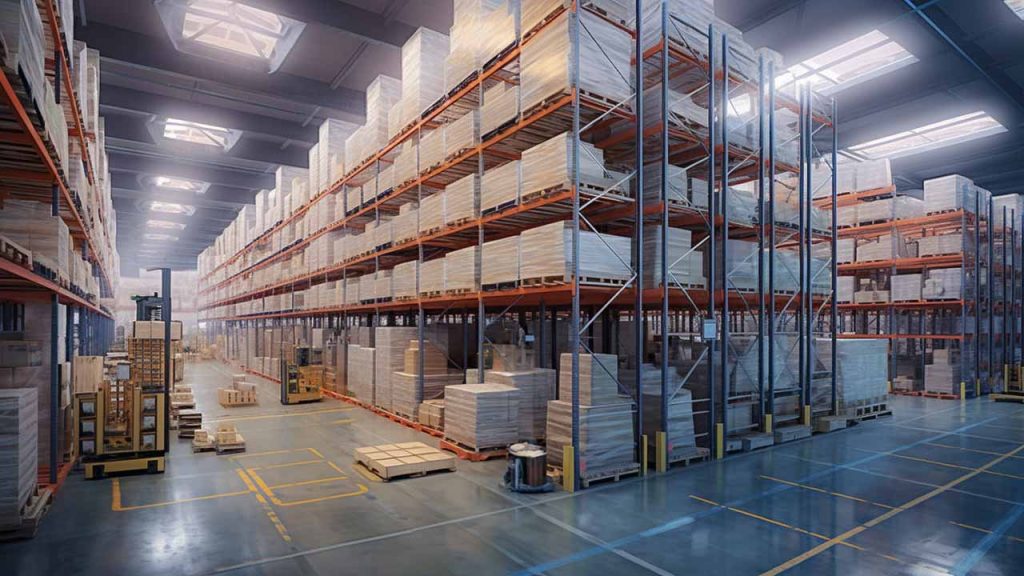Table of Contents:
- Introduction to Warehousing Solutions
- The Impact of Technology on Warehouse Storage
- Strategies for Optimizing Warehouse Space
- The Role of Warehouse Storage in Inventory Management
- Cost-Effective Warehousing Practices
- The Future of Warehouse Storage Solutions
- Choosing the Right Warehousing Solution for Your Business
- Conclusion: The Strategic Value of Innovative Warehousing
Key Takeaways:
- Effective warehousing solutions substantially impact the productivity and cost-efficiency of supply chains.
- Advancements in technology, mainly through Warehouse Management Systems (WMS), automation, and robotics, are crucial for modern warehousing.
- Cultivating cost-effective warehousing practices without compromising effectiveness is achievable through strategies that focus on optimization and innovation.
- The warehousing industry is rapidly evolving, with emerging trends pointing towards the integration of artificial intelligence and increased automation.
Introduction to Warehousing Solutions
Warehousing infrastructure serves as the vital link within the logistics chain, contributing significantly to the overall agility and proficiency of trade and commerce processes. The contemporary warehousing scene presents various solutions that bolster organized stock-keeping and amplify the logistical operations demanded by an ever-accelerating market. Businesses can achieve notable advancements in order fulfillment, inventory accuracy, and customer satisfaction through nuanced warehousing strategies.
With companies constantly pushing to deliver more efficient and cost-effective services, the importance of sophisticated warehousing storage systems becomes increasingly apparent. Businesses can optimize product storage and management with innovative warehousing solutions, enabling streamlined processes and informed decision-making.
The Impact of Technology on Warehouse Storage
Technology’s evolution has significantly impacted warehousing storage operations, transforming traditional storage practices into intelligent, data-driven approaches. Warehouse Management Systems (WMS) have played a pivotal role in this revolution by providing warehousing professionals with comprehensive tools to monitor inventory levels, optimize storage space allocation, and streamline supply chain tasks. These systems have transformed warehouses from passive storage facilities to active, value-adding supply chain components. Integration of automation and robotics has transformed warehousing and become invaluable for competitive businesses. They enhance precision, pace, and reliability in warehousing storage operations, significantly increasing operational productivity and minimizing human error.
Strategies for Optimizing Warehouse Space
Effective management and utilization of available warehouse space are essential for achieving operational efficiency and cost savings. Implementing well-thought-out layout designs alongside innovative storage systems, such as multi-tier racking and scalable shelving units, can drastically improve the overall functionality of warehousing facilities. Companies can vertically expand their storage capacity by tapping into such solutions, harnessing previously underutilized airspace and negating the need for expensive real estate expansions.
The Role of Warehouse Storage in Inventory Management
Its capacity to uphold proficient inventory management is central to any warehousing solution—a cornerstone for any successful business. A meticulous approach to inventory tracking fosters an environment of better order accuracy, mitigates the risk of stock discrepancies, and lays the groundwork for a responsive fulfillment process. The synergy between warehousing efficiency and inventory accuracy is pivotal, crafting a sturdy foundation for robust logistics practices capable of adeptly meeting and forecasting customer demands.
Cost-Effective Warehousing Practices
Aside from the core functions of storage and retrieval, warehousing practices also encompass a broader scope of operational and financial implications. Sustainable warehouse practices, such as energy-efficient lighting and temperature control systems, can lead to significant cost savings over time. Implementing an intelligent warehousing design that maximizes space and minimizes waste contributes to a leaner operating budget. It positions the organization as a responsible entity within the global market, echoing the calls for eco-friendly practices.
The Future of Warehouse Storage Solutions
As the warehousing landscape evolves, emerging trends such as artificial intelligence (AI) and advanced machine learning algorithms set the stage for a future brimming with possibilities. These technologies promise to amplify warehousing operations by providing deep insights into consumer behavior, optimizing logistic routes, and inventing new operational standards that were previously unimaginable.
Choosing the Right Warehousing Solution for Your Business
Selecting an appropriate warehousing solution requires carefully evaluating specific business needs, including scalability, technological adaptability, and economic feasibility. The decision-making process must weigh the initial investment against potential long-term operational savings. To ensure a cohesive and efficient supply chain, businesses must align their warehousing strategy with their overarching corporate objectives, considering inventory turnover rates, geographic considerations, and customer delivery expectations.
Conclusion: The Strategic Value of Innovative Warehousing
Contemporary warehousing solutions transcend traditional storage notions, casting warehouses as proactive, strategic contributors to the supply chain. Embracing innovative practices and advanced technological systems within warehousing operations grants businesses the agility to navigate market fluctuations and satisfy evolving customer preferences. Ultimately, through leveraging sophisticated warehousing solutions, companies can secure a formidable competitive advantage, ensuring a resilient, optimized supply chain capable of facing the demands of tomorrow.

